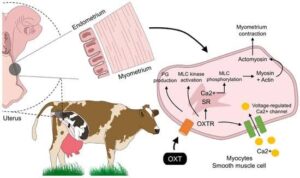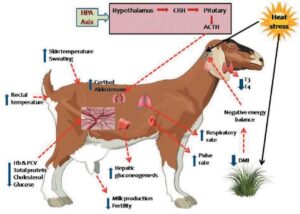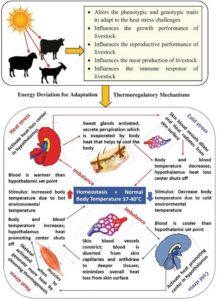Back to: ZOOLOGY 400 Level
Welcome to class!
Hello there, my focused and fantastic learner! Today’s lesson is something you’ll find quite eye-opening — because it shows just how smart and adaptable the human body is. Whether you’re writing an exam under pressure, hiking up the hills of Obudu, or walking under hot sun in Abuja, your body uses hormones to help you cope. That’s what we’re learning about today: Hormonal Adaptations to Stress, Altitude, and Temperature.
Hormonal Adaptations To Stress, Altitude, And Temperature
Your body is constantly facing changes — some planned, like exercise, and others unexpected, like sudden heat or high places. To survive and function properly, your endocrine system releases hormones that help you adapt.

Stress Adaptation
When you’re stressed — maybe you’re facing an exam, injury, or sudden danger — your body releases stress hormones. The key ones are:
Adrenaline (epinephrine) from the adrenal medulla: It acts fast to prepare you for “fight or flight”. It increases heart rate, breathing, and energy availability.
Cortisol from the adrenal cortex: This is a longer-term stress hormone. It helps break down fats and proteins for energy, raises blood sugar, and controls inflammation.
These hormones ensure your brain and muscles get the energy they need during tough situations.
Adaptation to Altitude
At high altitudes — like Jos Plateau or Mount Cameroon — the air has less oxygen. Your body responds with hormonal changes to help you survive:

Erythropoietin (EPO), produced by the kidneys, increases. It signals the bone marrow to make more red blood cells, which carry oxygen.
Adrenal hormones may also help by increasing heart rate and breathing, so more oxygen is absorbed.
These adjustments improve oxygen delivery to tissues, helping the body cope with thin air.
Adaptation to Temperature
In hot or cold environments, the body adjusts through hormones:
In hot temperatures, the hormone aldosterone helps retain sodium and maintain fluid balance, especially when sweating a lot. ADH (antidiuretic hormone) also helps conserve water.
In cold environments, your thyroid gland increases the release of thyroxine, which raises the metabolic rate, helping generate more heat. This keeps your core body temperature stable.

Example: Imagine a student in Maiduguri walking under the hot sun to class — sweating and thirsty. ADH helps prevent dehydration, while aldosterone keeps their salt and water balanced. Meanwhile, a hiker climbing Mount Kilimanjaro produces more EPO to carry enough oxygen in the thin air.
Summary
- The body uses hormones to adapt to stress, altitude, and temperature.
- Adrenaline and cortisol are key stress hormones — they help the body respond quickly and maintain energy.
- At high altitudes, the kidneys release erythropoietin to increase red blood cell production.
- In hot environments, aldosterone and ADH help conserve salt and water.
- In cold environments, the thyroid gland increases thyroxine to boost heat production.
Evaluation
- Name two hormones involved in stress response and their functions.
- What does erythropoietin do, and when is it released?
- How does the body conserve water in hot environments?
- Which hormone increases metabolism in cold weather?
- Why are hormonal responses important for survival in changing environments?
Great job today, champion! You’ve just learnt how your body uses hormones like tiny messengers to help you survive and thrive — no matter what the environment throws at you. With Afrilearn, every lesson brings you closer to excellence. Keep growing, keep glowing, and remember — you’re capable of amazing things!
